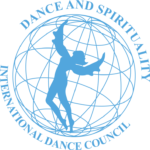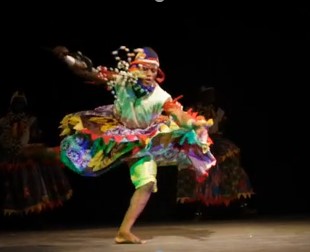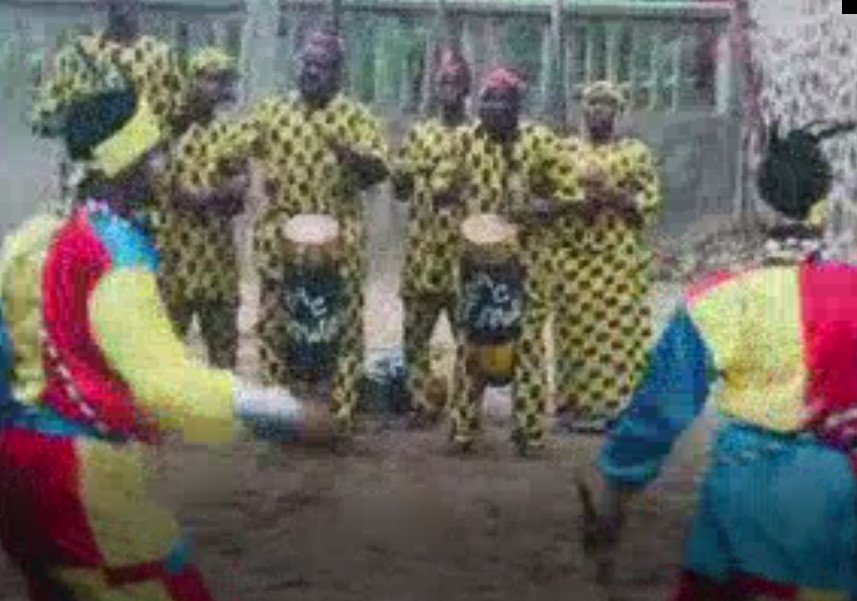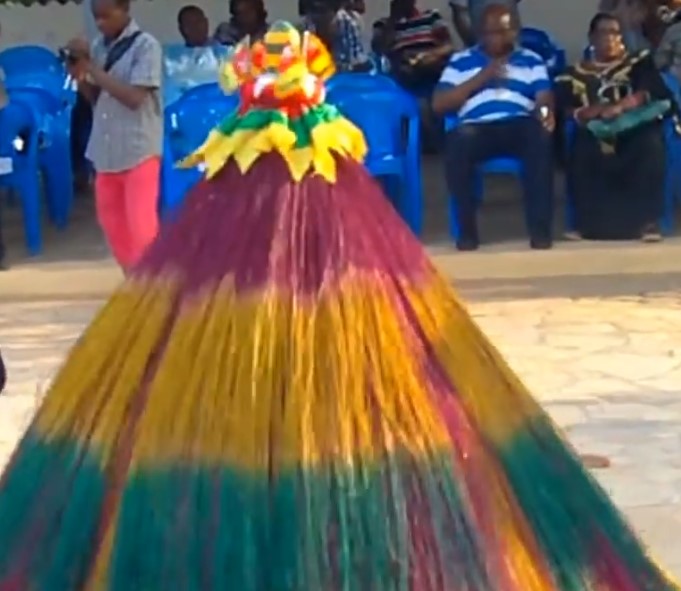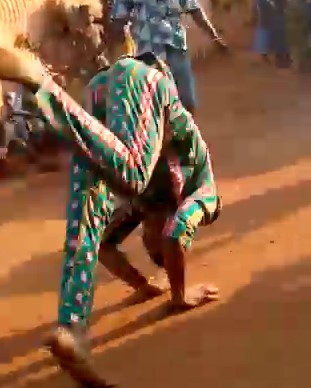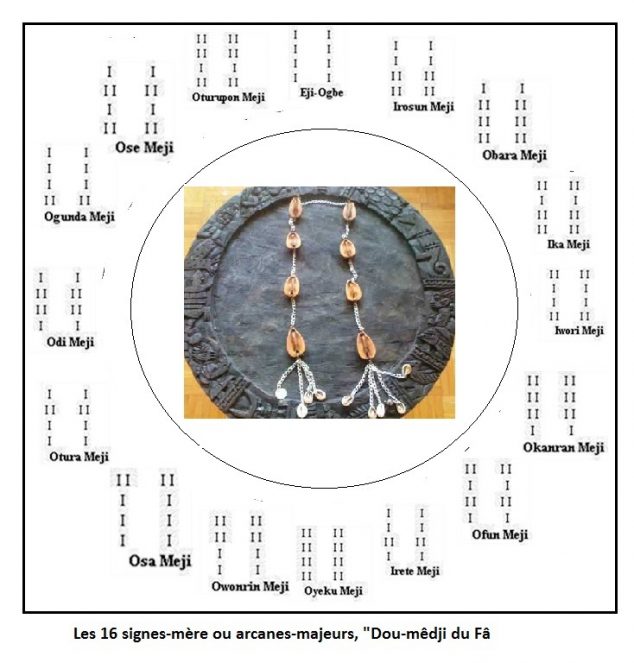THE VODOUN TRADITION IN WEST AFRICA

Introduction
Vodun cosmology centers around the vodun spirits and other elements of divine essence that govern the Earth, a hierarchy that range in power from major deities governing the forces of nature and human society to the spirits of individual streams, trees, and rocks, as well as dozens of ethnic vodun,defenders of a certain clan, tribe, or nation.
The vodun are the center of religious life. Adherents also emphasize ancestor worship and hold that the spirits of the dead live side by side with the world of the living, each family of spirits having its own female priesthood, sometimes hereditary when it’s from mother to blood daughter.
European colonialism, followed by some of the totalitarian regimes in West Africa, have tried to suppress Vodun as well as other traditional religions. However, because the vodun deities are born to each clan, tribe, and nation, and their clergy are central to maintaining the moral, social and political order and ancestral foundation of its village, these efforts have not been successful.
Recently there have been moves to restore the place of Vodun in national society, such as an Annual International Vodun Conference held in the city of Ouidah in Benin since 1991
General information on Vodoun ( A spirituality that cannot be elucidated) in french by Zekpa Laurent CID Member
Excerpts of our online Seminar 10-04-2021 "Vôdoun : Dancing The Divinities"
TEXTS
Dr Kontogiannis Constantin « The Vôdoun and its place among Sub Saharan Africa’s spiritualities”
Read the text (French/English)
Pr Zekpa Codjo Laurent « Introduction to Vôdoun Dances »
Read the text (French/English)
Dr Schott-Billmann France « Vôdoun : between tradition and modernity”
Read the text (French/with English summary)
VIDEOS
Audiovisual presentations on vodoun deïties followed by commentaries by Pr Laurent Zekpa
See videos and read texts(French with English summaries):
Listen to the Introduction Generic
SAKPATA
Divinity symbolizing the Earth, the foster mother but carrier of smallpox and endemic diseases. the deity tchankpannan (god of the earth) is venerated by very evocative dance steps. SAKPATA keeps smallpox and all endemic diseases at bay.
DAN
The Vodoun DAN was formerly called AIDOWHEDO or rainbow, it is also the dance of fertility and which embodies the god of wealth and fertility. This dance is performed in the south and center of BENIN by the MAHI and FON peoples in homage to the serpent deity “DAN”. Dan symbolizes waters, mountains, trees, wind, air. She is implored to ask for peace, fertility and fecundity.
GBELOKO
The Vodoun Loko is materialized by an altar associated with rituals to ensure the prosperity of the community”. This Vodoun generated by the spirit of the iron tree (Loko tin) life is reincarnated in the tree: Reincarnation Gbê “The Loko divinity is a ritual and social practice specific to the Azohouê clan. This practice is manifested by libations which are made on the days of the Djégan or missérété market.
HEVIOSO
Representation of lightning (called the thunder deity). It is the direct link with the air and the fire and the earth: Shango is the Vodoun of the rain and the sky, The god Hêvioso condemns conspiracies, poisonings, sacrileges and punishes with lightning. Known to people in southern Benin. Hevioso/Hebioso/Shango is a righteous God. He punishes liars, thieves and criminals by striking them down. He is represented in the form of a man knocking down a living being at his feet with an axe.
ZANGBETO
A true guardian of the night, the ZANGBETO has an important social function. For this, he has powerful powers that allow him to split, transform, etc. He is often called upon to rebuke retrograde behavior such as theft; rape and disputes between ethnic groups in our countries and especially against the forces of evil and malevolent spirits
KOKOU WE
KOKOU WE or DJAGUI DI: very protective and very jealous deity: she protects her followers by purifying blood and DJA-Sïn made from corn flour mixed with water or red oil to give more vigor to the protective spirit of the followers. It is the deity of the Wla, Guin, Péda or Ouéda peoples: they are found in the Mono and Couffo departments.
REVENANT EGUNGUN
the dead come to pay homage to the living. A ritual that values death and life: “The dead are not dead, they are in the breath of the ancestors. by Birago Diop, Senegalese writer. It is a way for the living to commemorate the reincarnation of the spirits of our dead. The “Egungun” is a Yoruba sacred mask which is the manifestation of the deceased ancestors. It often takes various forms and is provided with decorations made of cowries and pearls which give it all its elegance. Festive dances and magic demonstrations characterize this mask.
MASSE GOHOUN
traditional celebrations relating to social life: birth or marriage, good harvest. It is a popular rejoicing dance often performed by men and women of puberty or adult age.
This symbolizes married life, domestic scenes, disputes, tense exchanges and misunderstandings. This tension in the couple often results in a wait in the marital bed.
A mesmerizing dance.
More notions, deities and rituals :
Fâ
Fâ (or Ifa) is a divinatory art traditionally practiced by the populations of the Gulf of Benin, as the Yoruba of Nigeria, Benin and the Fons of Benin. It is as much a science (geomancy) as well asa divinity presiding over the fate of man over his past, present and future by teaching him his deep links with nature through allegorical tales linked to each arcane. Key to vodun, it creates a language that allows men to communicate with God, through the Orishas, the ancestors and the deceased. The Fâ guides and enlightens man from his conception until his death and even beyond.
This divinatory art of ancient Egypt, passed by the Nile, then by West Africa Yoruba through Nigeria, then in the city of Ifé around the 17th century to reach Benin where it was adopted and adapted by the Fons.
See Video :
Le Fâ : à la découverte de mes racines Crédit : TV5 Le Monde

Buriyan
Also known as “BUMBA MEU BOL” takes place at the celebration of SENHOR BOMFLM’s feast and corresponds to the memory and syncretisms of the AGOUDA COMMUNITY.
They are descendants of the liberated slaves from and around Bahia who came back to Benin with their customs and their way of life in Brazil , to which they were attached.
Among the customs was their devotion to “Senhor de Bomfim”, celebrated with a ritual including dance and carnaval.
The celebration is preceded by a mass and followed by a picnic with tasty Afro-Brazilian dishes.
The peak of the feast is the appearance of Buriyan disguises in the day preceding the celebration with dances and acrobatics on “Samba” and “Bamba” rhythms. In the course of this nocturnal feast, various figures appear: the Buriyan (masked person), the ox (Oboi), the horse, Le cheval amuse la foule par ses cavalcades. Many musical instruments are used Buriyan’s mask is not a sacred mask. There are secrets that are no longer related to wearing a costume; it’s more for the purpose of involving the crowd. However, some aspects are not available to everyone so may be considered by some to be secrets of the mask.
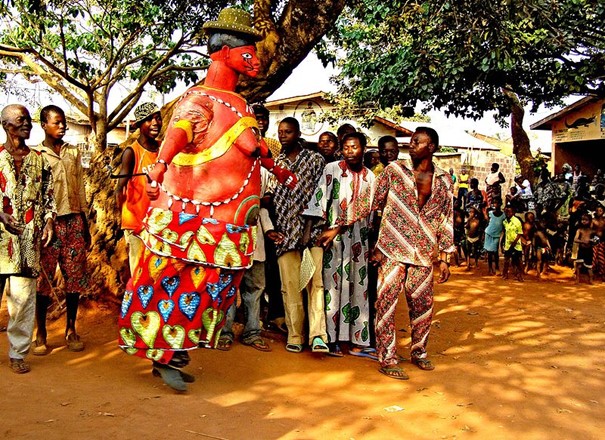
See Video :
Le patrimoine oral Guèledé Crédit : UNESCO France
Guèlèdé
Is a ceremony practiced by the Yoruba-Nago community established in the Yoruba-Nago region in Benin, Nigeria and Togo. Songs in the Yoruba language, music by four tam-tam and masked dances take place at the end of the harvest, and during important events such as births, deaths, and weddings or in the event of drought or epidemic . The impressive effects of the ceremony make the Yoruba people say that “the eyes which have seen the Guèlèdé have seen the ultimate spectacle”
The city of Kétou in Benin ,is considered the birthplace of Guèlèdé where it consists a secret society . The Guèlèdé is the tribute to pay to the mystical powers of women, from whom we must protect ourselves and who must be appeased in order to transform them into a beneficial power for society. To appease the “mothers” as it is customary to call them, the men put on their masks. With a light scarf and a dress with long sleeves, they hide their physiognomy; they tie bells to the ankles and dance.
“The Guèlèdé oral heritage” was originally proclaimed in 2001 and then inscribed in 2008 by UNESCO on the representative list of the intangible cultural heritage of humanity.
Ritual of purification
At the end of each year fons, gouns, mina, and yoruba
The multiple ceremonies taking place throughout the year – though beneficial to the recipients -, create negative social externalities in time and space for the community as a whole. These evil spirits are a race of evil miniature fairies that are specially born from these rituals. Getting rid of them necessarily requires a great purification ceremony, lasting about a month, in the regions concerned. This ceremony is a staging orchestrated by all the administrators of convents. The music, the songs and the dance come from a reproductive interpretation, which makes it possible to invoke the good divinities to drive out the evil spirits which swarm at night as of day in the city, in the clearings, the undergrowth, the lakes, the backwaters and rivers.
Suggested Reading (under preparation):
Klo Toh : Ritual of purification in south Benin in french by Laurent Zakpa CID Member
Top photo : AFRICAN VODOUN IN BENIN Credit : Revue l EXPRESS 2016 REUTERS
